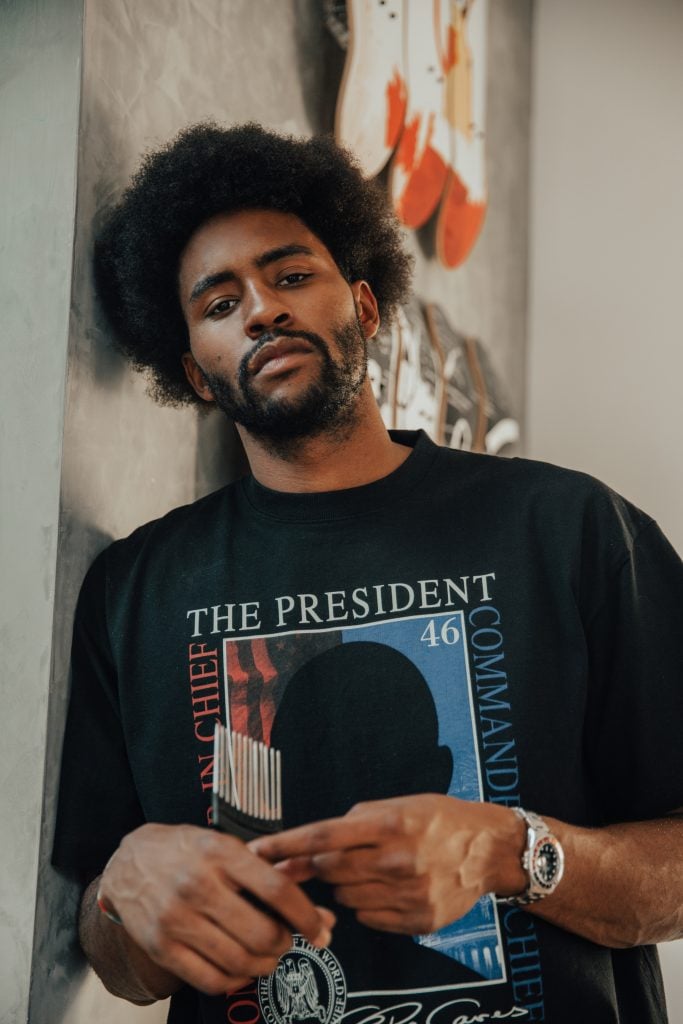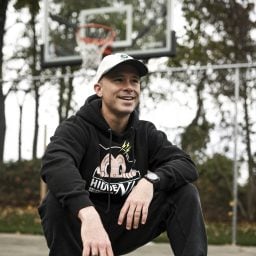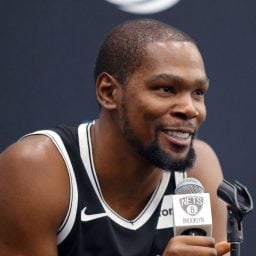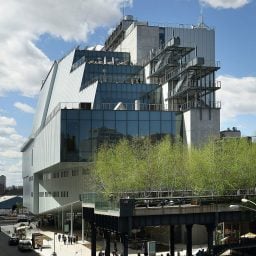Since mid-March, one of the defining choices of our anxious daily lives has revolved around how to spend whatever free time 2020 leaves us. Even as most of us give in to the urge to endlessly doom-scroll through our various screens, we know there’s a smaller, more enlightened group of people using the same time to dig into pursuits that expand their minds and enrich their experience of the wider world.
By leaning into his interest in studying and collecting contemporary art, Moe Harkless became part of that rare second group. Then again, maybe this shouldn’t be a surprise. Being part of an elite group doing things beyond the capacity of the average person is familiar territory thanks to his day job for the past eight years and counting as one of the National Basketball Association’s most versatile wing players.
Put the pieces together, and Harkless, 27, is a portrait of the modern professional athlete, especially in the world’s top basketball league. From respected veterans to the younger generation, select NBA players have spent years quietly immersing themselves in high-level endeavors like fine wine, tech entrepreneurship, and yes, collecting.
Harkless told Artnet News by phone that his interest in art began at a young age. A native of Queens, New York, who went on to play at St. John’s University, he has fond memories of taking a high-school cartooning class. (His mother even keeps one of his sketchbooks from that time on hand, according to a recent Sports Illustrated profile.)
But after spending the past five years visiting galleries and researching the art market, Harkless says he’s done dipping his toes in the collecting waters and is “now diving into it.”
The events of this unprecedented year have helped, in a strange way. Harkless started the 2019–20 season on the Los Angeles Clippers, where he contributed as one of the league’s most consistent “three-and-D” players, with the shooting range to knock down three-pointers and the ability to defend across multiple positions, from smaller, quicker guards to taller, more bruising power forwards.
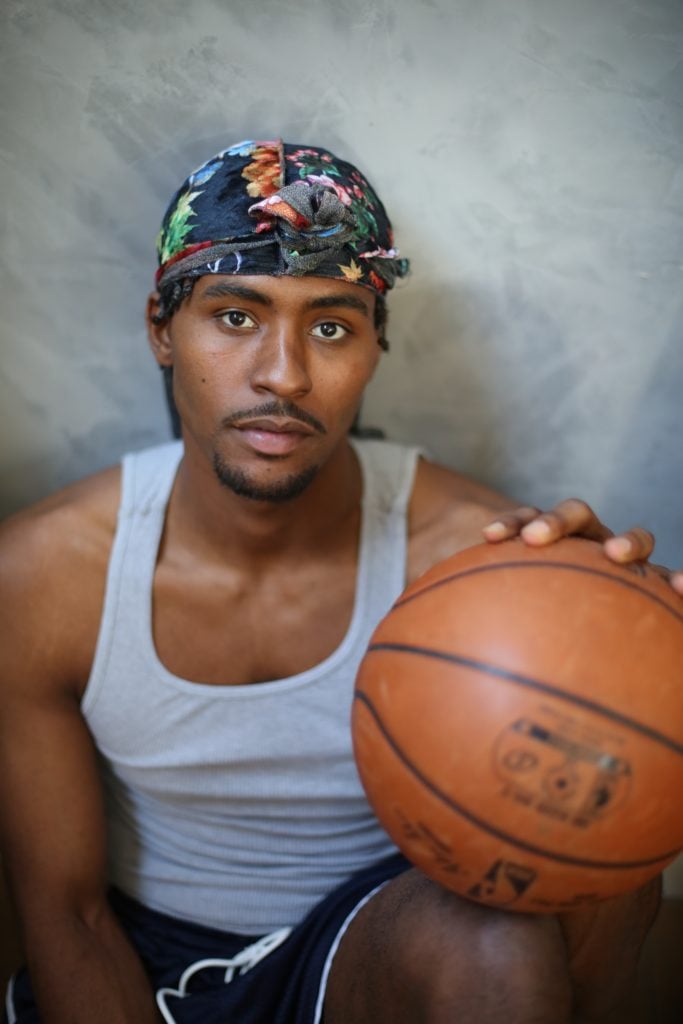
NBA forward and budding collector Moe Harkless. Photography by Cecile Boko. Courtesy of Moe Harkless.
After a mid-season trade landed him with his hometown New York Knicks in February, he decided to rent in Chelsea for the remainder of the season because the neighborhood was its own kind of double threat: a short distance from the Knicks’ home court in Madison Square Garden, as well as the gravitational center of the city’s world-renowned gallery scene.
Harkless moved to New York just ahead of Armory Week and took full advantage of what would turn out to be the US’s last true art-fair extravaganza of 2020. He scoured the aisles at the Armory Show, the Independent, and Scope for the first time; his photo essay for the athlete-run Players’ Tribune documented his experiences with works by Jean-Michel Basquiat, Derrick Adams, Amoako Boafo, and others.
The NBA suspended its regular season out of public-health concerns on March 11, just days after Armory Week ended. When it became clear that the shutdown would be extensive, Harkless returned to his offseason home in LA to train for whatever came next. Play ultimately did not resume until July, when the league welcomed the 22 teams in striking distance of a playoff berth into its meticulously contained “campus” environment (AKA “the bubble”) inside the Disney World complex in Orlando.
Because the Knicks did not qualify for the bubble, Harkless’s season was over, leaving his schedule uncharacteristically open.
“This has been the most I’ve been home since I got drafted” in 2012, he says. But one unexpected positive is that the break has freed him up to continue his dive into the art world.
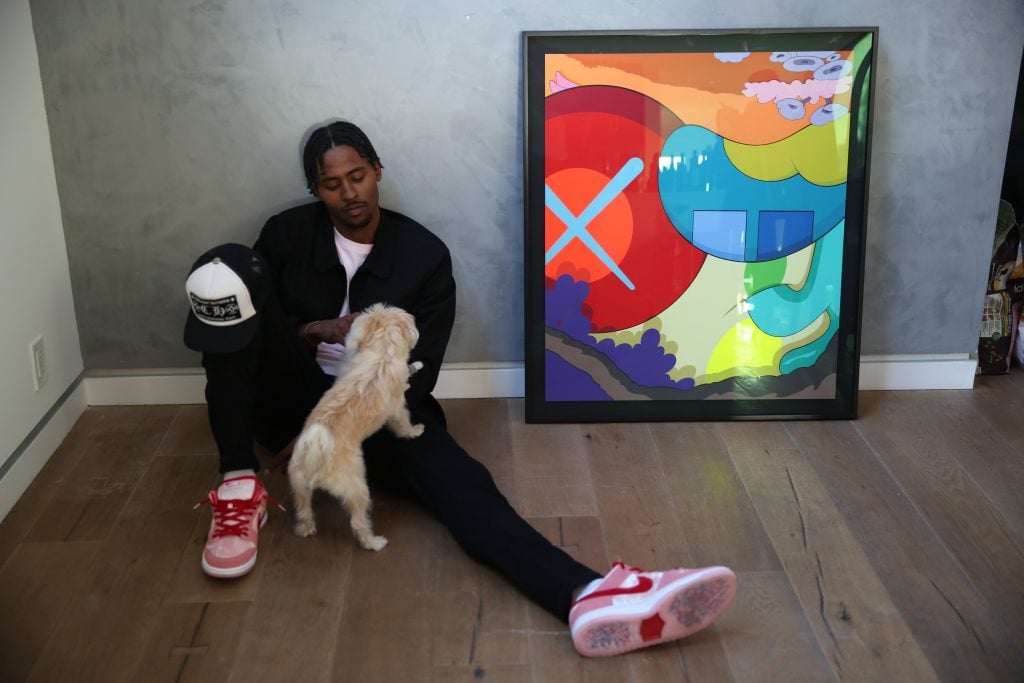
Moe Harkless at home with his collection. Photography by Cecile Boko. Courtesy of Moe Harkless.
Building Blocks
Harkless literally started building his collection with bricks—more specifically, a collaborative set of three KAWS-designed Be@rbricks, the limited-edition Japanese collectibles that caught fire among the streetwear crowd years ago. His next acquisition came at Art Basel Miami Beach in 2018. There he scored Nina Chanel Abney’s Two Years and Counting, a relief print featuring a Black basketball player in a teal jersey rising up for a shot against a cotton-candy pink background.
KAWS and Abney established the visual template that continues to guide Harkless’s collecting today: a 21st-century Pop aesthetic energized by bold colors, sharp edges, and stylized figuration. He’s also drawn to artists who work at the junction between street art and the traditional gallery, including the painter Todd James (who has collaborated with KAWS and Barry McGee); the whimsical pastel surrealist Super Future Kid (whose most recent solo show took place at the New York space run by Daniel Arsham and Kith founder Ronnie Fieg); and harlequin-palleted abstractionist Maya Hayuk.
Still, the climate of the US in 2020 seems to be playing a growing role in Harkless’s contemporary art journey. “The best type of art is always thought-provoking, always starts a conversation,” he says. He references Abney as an artist he appreciates for “always pushing it politically,” acknowledging that socially engaged work is even more important today.
Harkless is riding the collecting wave further and further. Asked about the size of his collection, he replied: “I’ve got the walls in my house covered and then some,” adding with a laugh that he recently had to start looking into offsite art storage. One of his goals is to begin rotating the works on his walls seasonally.
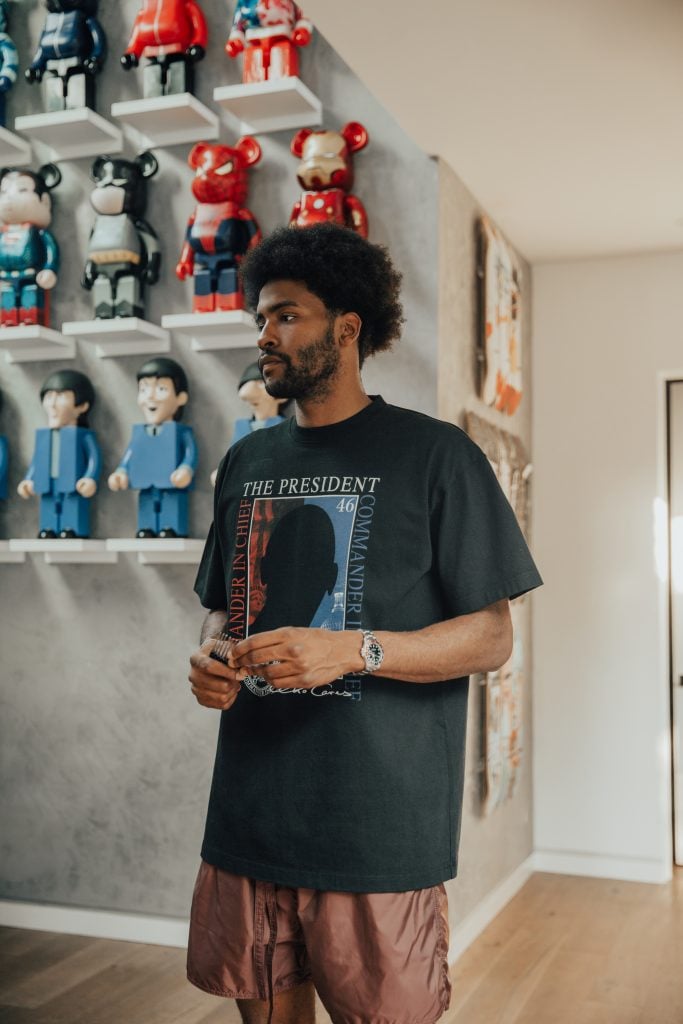
Moe Harkless at home with his collection. Photography by Cecile Boko. Courtesy of Moe Harkless.
Unlike many buyers of means—he’s estimated to have earned nearly $48 million from his NBA contracts to date, according to pro-athlete salary tracker Spotrac—Harkless has opted out of working with art advisors, and is handling the responsibilities of curation and collecting himself.
“I just want to use these opportunities to go to different galleries and build relationships with people to learn things I don’t know,” he explains, citing a rendezvous with street-art historian and impresario Roger Gastman as one memorable example.
Although dealers have a well-earned reputation for wariness of perceived outsiders, Harkless has encountered very little static based on his professional background. “I don’t lead my conversations as an athlete,” he relays. “I’m not sure what the stigma is behind athletes and the art world, but once they get to know you and talk to you, that goes out the window.”
Most of all, though, interfacing with the work and the artists themselves is what has hooked Harkless, particularly when he has an opportunity to see the creative process happen in person. He recounted a recent studio visit with an artist duo that was so in sync, they moved as “one person with four arms.” The physical and mental synergy reminded him of peak performance in his own line of work.
“In basketball, we call it ‘being on a string’ or ‘being in the zone.’ That’s what it felt like while I was watching them: they were in their zone,” he said with audible respect in his voice. “Those types of experiences are the ones you can’t get without diving into [art].”
